Driving on snowy roads with Tesla and Pirelli all-season tires!
公開日:2025.01.24
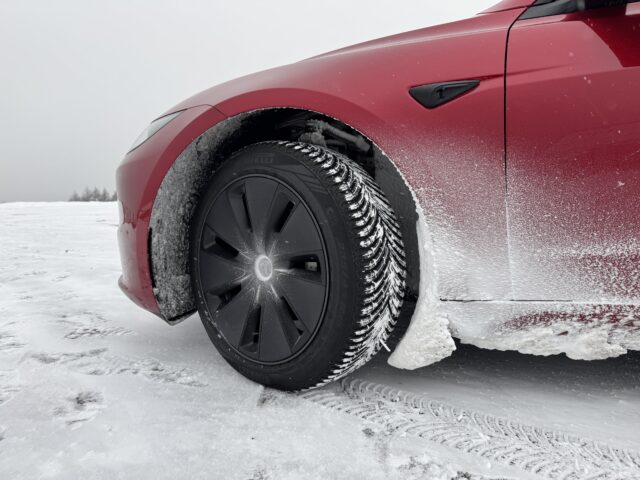
contents
All-season tires on snow-covered roads
Pirelli all-season tires for Tesla previously.Cinturato All Season SF 3I introduced in my blog that I had installed This time, as a sequel to that blog entry, we report the results of testing these tires on snow-covered roads.
Purchased Pirelli's new Cinturato All Season SF 3 all-season tire - put it on my Tesla Model 3
First of all, I would like to say that in Japan, when I hear about driving on snow-covered roads with all-season tires, people say, "That's inexcusable! Dangerous! Whenever I tell people that I have driven on icy roads in Japan with all-season tires, they always say, "That's outrageous!
However, theI am aware of a hundred such reviews.I will say this as a basic premise.
I originally do not like the Galapagos tires called studless tires.
While we understand that they are strong on icy roads, we feel that their high-speed stability, rigidity, and grip and braking power on dry and wet surfaces are too weak to spoil their performance when put on a high-performance vehicle. Therefore, we basically do not use studless tires, opting instead for all-season tires or European winter tires.
In my winter driving environment,95% or better, cold dry or wet.. Using squishy studless tires in such conditions will result in poor grip, longer braking distances, and a worse feeling when driving. The appeal of a high-performance car is halved.
So what about when it is icy? The question would be, "What about when it is icy?
I drive very carefully in such situations. I try to avoid stepping on dangerous areas such as black ice, and if I know it is icy, I avoid ruts and drive on snow covered or compacted areas. In this way, I try to maintain as much grip as possible.
There is often criticism of this way of thinking, saying that we can say this because we don't know what a real iceberg looks like.
However, I was also born and lived in an area with a lot of snow, have been going to ski resorts since I first got my driver's license, and spent a lot of time during the winter at ski resorts in Shinshu when I was a student. I have a fair amount of experience driving on snowy roads. I have had a lot of experience with studless tires.
On top of that, they dare to choose to use all-season tires.
Pirelli all-season tires on snow-covered roads
This time, I went touring at the end of the year with a Tesla equipped with Pirelli all-season tires.
We were able to experience a variety of snow conditions on the highway, the Venus Line in Nagano Prefecture, the Myoko region in Niigata Prefecture, and the Japan Sea coast.
Average temperature during this touring was about 3.5 degrees CelsiusThis is an average that includes the warmer temperatures in the Kansai region. This average includes the mild temperatures of the Kansai region.
In the mountains, we drove through many places where the temperature was minus 7 to 9 degrees Celsius, and we also experienced wet, near-freezing road surfaces that were prone to ice burn. In such a situation, I would like to conclude first that throughout the entire tripThere was no problem at all.Rather, I did not feel insecure even if I was going a little fast.
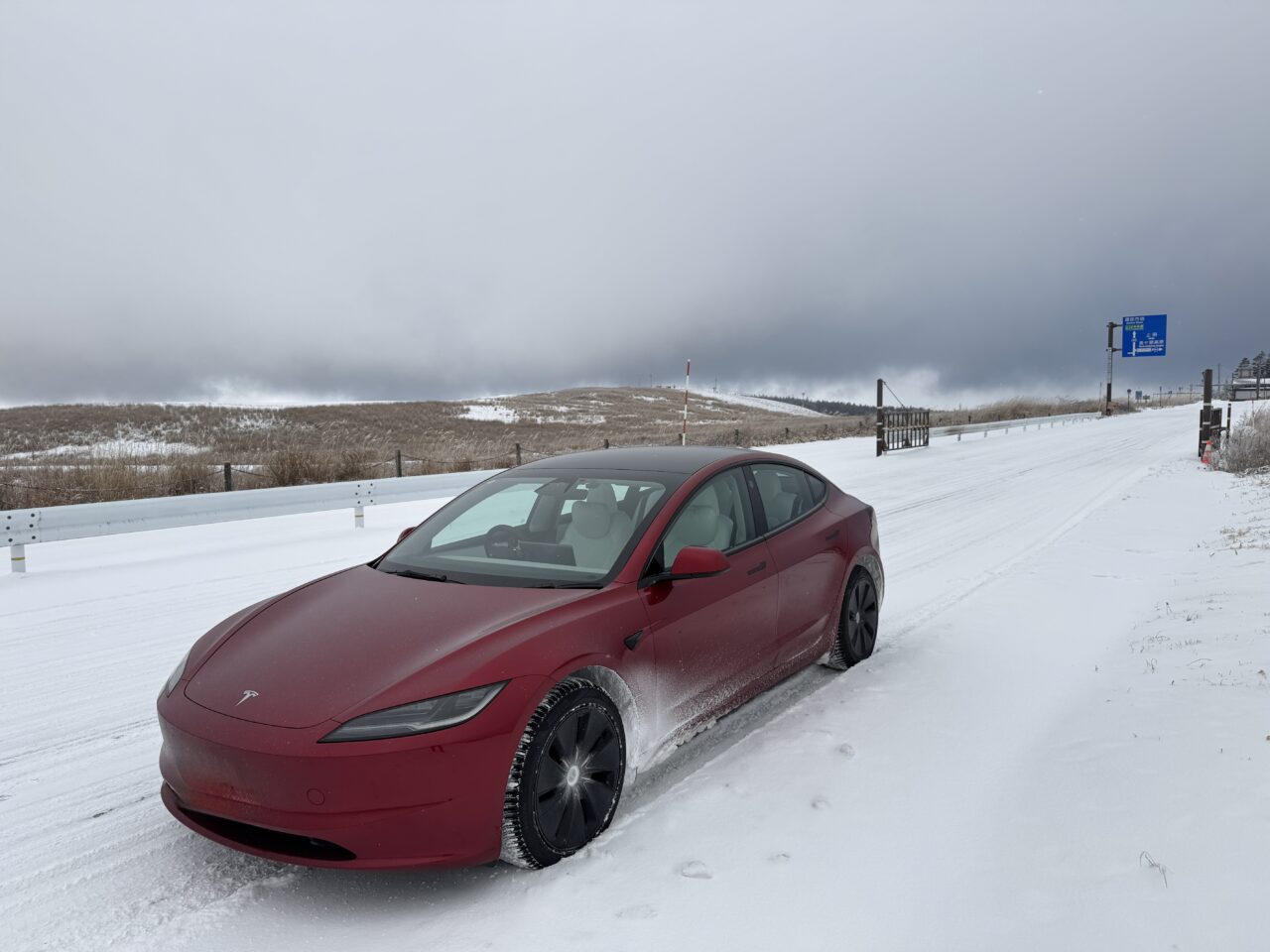
All-season tires have V-shaped grooves, so even though they do not have the same traction as studless or winter tires, they provide sufficient grip on compacted snow. They can also be used to climb hills,If you live south of the Kanto region and go skiing occasionally in winter or commute to work during heavy snowfall, all-season tires should be sufficient.
All-season tires are especially suitable for drivers who live in urban areas and spend most of their time on wet or dry roads. Rather than squishy studless tires, rigid all-season tires have better braking power during emergency braking and are more fun to drive in the first place.
Tesla characteristics and all-season tire compatibility
The characteristics of Tesla, an electric vehicle, also played a major role in this snow driving.
The Tesla is a car that does not lose traction easily because of its very precise motor control. I have experience with many different cars, but I have never known a car with such precise traction control.
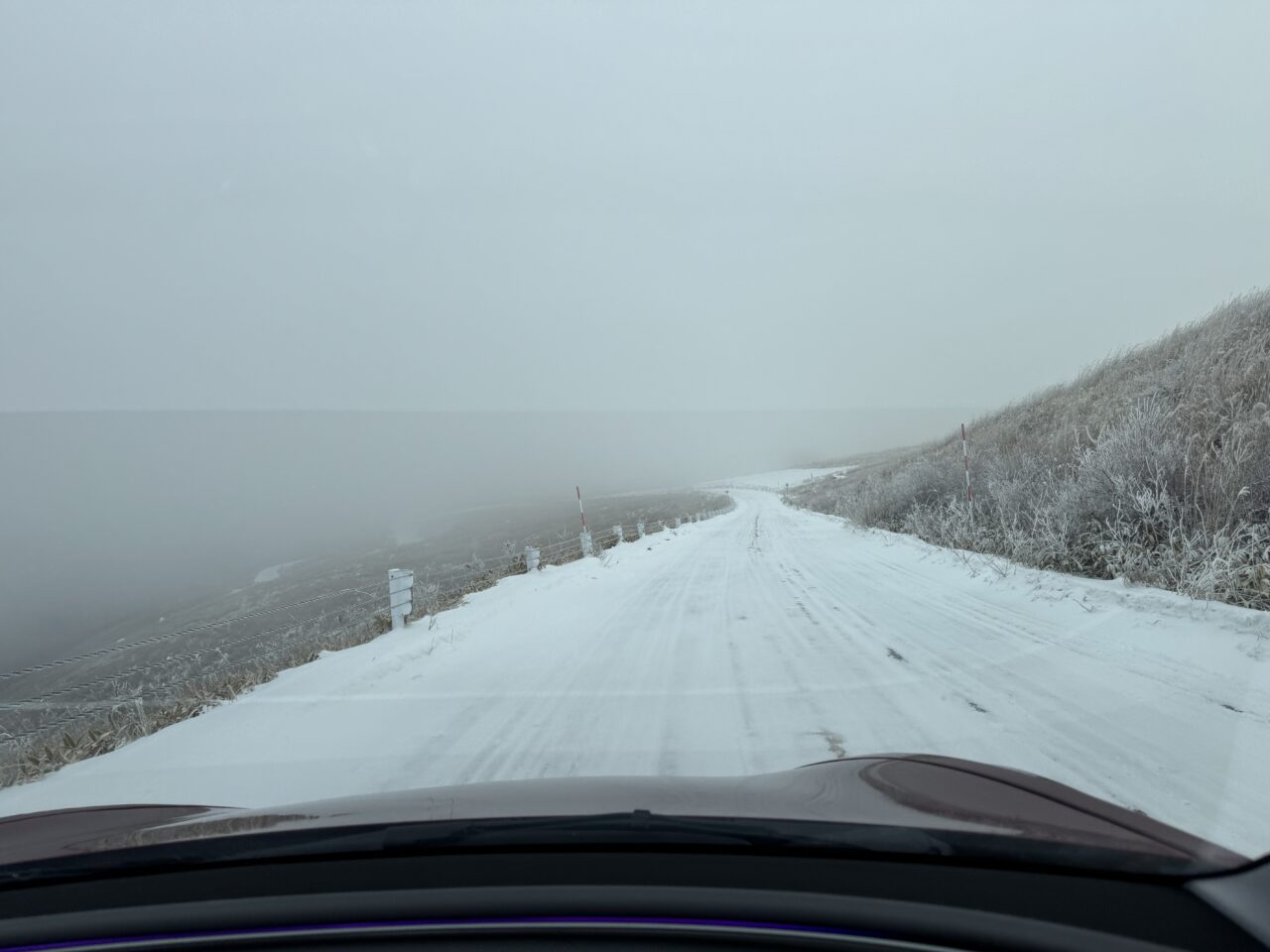
It also has a very good regenerative braking system.
Tesla's regenerative braking is not just regenerative braking, but includes ABS-like controls that are smart enough to try to maximize the grip of the tires.Even in places where a light pressure on the regular brake pedal would easily cause the car to slide, regenerative braking slows the car down as if it were a lie.
In this regard,Very good combination of Tesla and all-season tires.I felt that it was a good idea.
Driving in severe snow conditions
At the Venus Line in Nagano Prefecture, we drove many round trips on snow-covered roads and dared to take many curves that were shaded and icy.
Of course, they could not be driven as well as summer tires, but I never felt that this was dangerous at all. Of course I felt some slipping, but I could regain grip quickly and rather just by taking the tires out of the ruts a little or hitting the snowy areas where there was still some snow on the ground,I was more surprised that today's all-season tires can run so well.
We have been testing how far the Tesla Model 3 all-season tires (Pirelli CINTURATO ALL SEASON SF3 ) can go.
No snow road problems at all. More than adequate traction and handling.
I mean, the control of the Model 3 is too precise and awesome.With foot braking, regenerative braking is too good to decelerate normally even in situations where ABS is effective. pic.twitter.com/VBPyv96kzu
- Hiro@Porsche came to my house (@boxster_gts) December 27, 2024
However, we did not easily encounter complete mirror burns (slippery icy road surfaces) this time, but it would be difficult for all-season tires to cope in such an environment. However, in such extreme conditions, studless tires would have struggled as well.
We drove in heavy snow in Myoko and on the highway where the snow continued to fall, but we never felt uneasy.
Of course, because of the heavy snowfall, the tires did sway from side to side on the ruts, but this would be the same with any tire. Even on the snow-covered roads and in the heavy snow, we had no problems at all, and we had no trouble at all in making any progress or stopping.
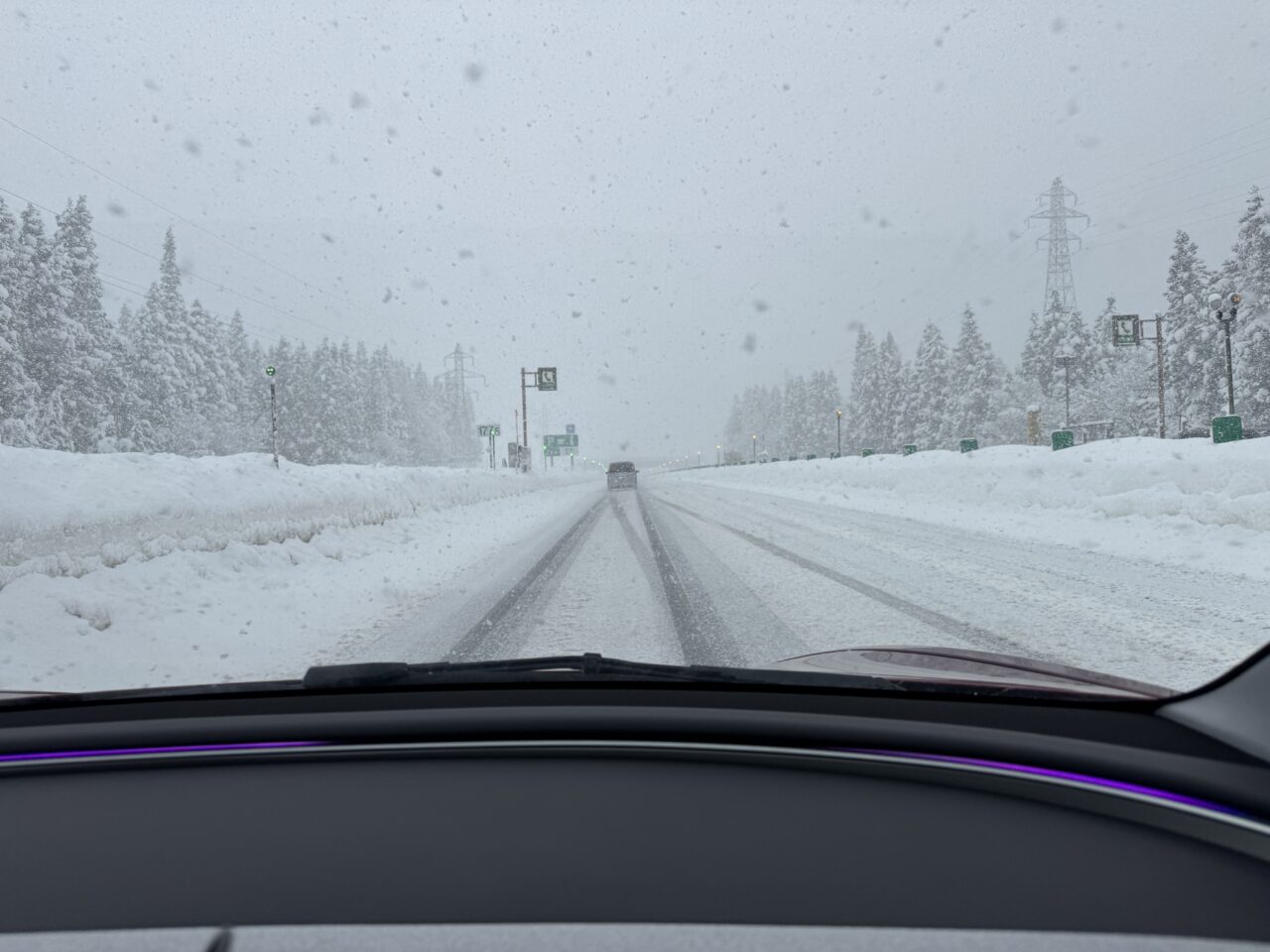
Strengths and Weaknesses of All-Season Tires
On the other hand, the true value of all-season tires is demonstrated on almost wet sherbet-like surfaces after the snow melts or on wet surfaces caused by rain. While studless tires are extremely vulnerable to rain and wet roads, all-season tires show their strength under these conditions. Braking power is also high and safety is high.
Ultimately, it's all about where the emphasis is.
If you need to drive in extreme conditions, such as a complete mirror burn of ice (a slippery frozen surface), you should probably choose studless tires instead of all-season tires. However,For most people, sherbet, pressurized snow roads, and slightly icy surfaces are common. In such environments, all-season tires are sufficient.
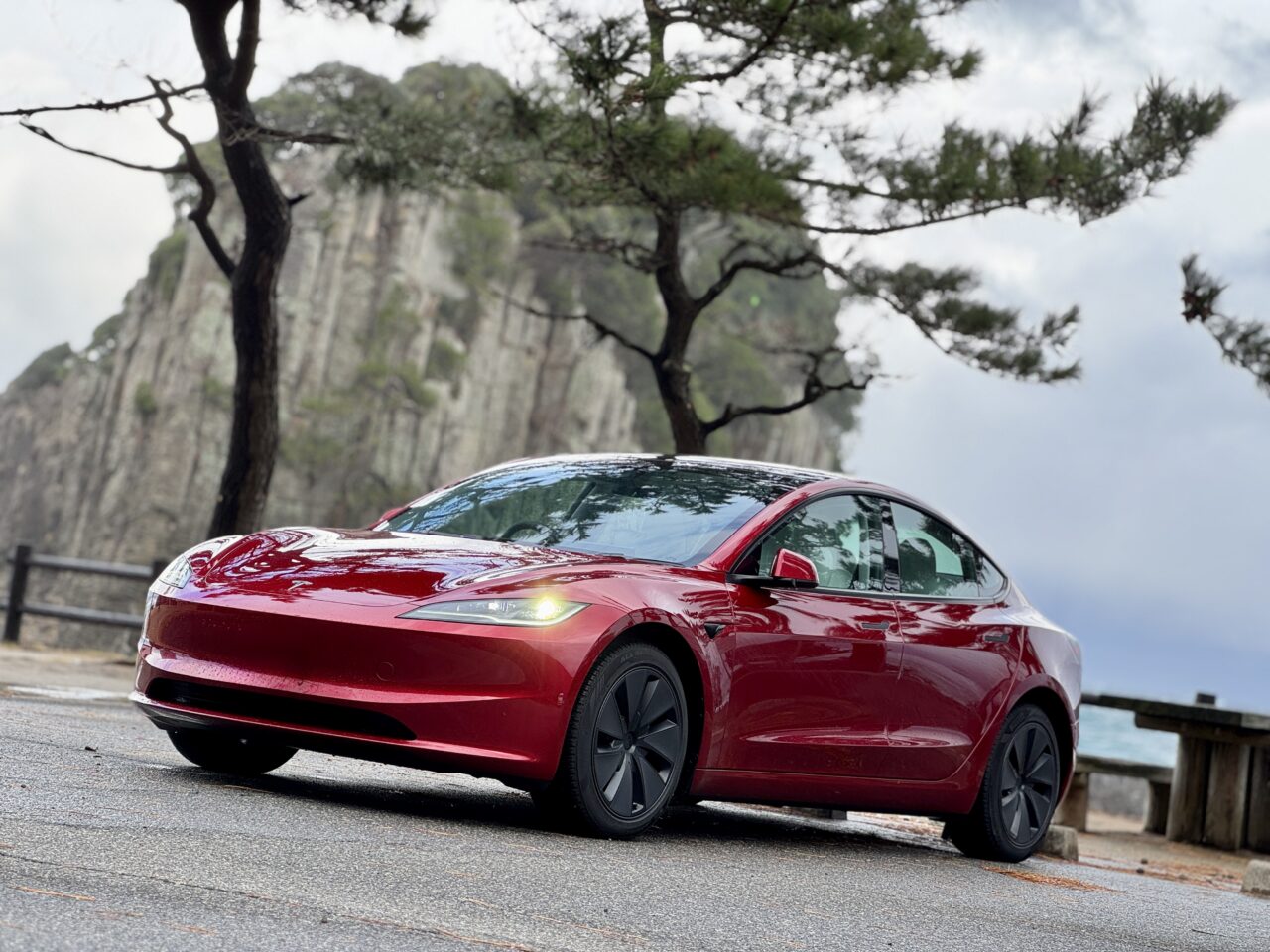
This time, when driving on the Sea of Japan side, there was heavy snowfall and many local cars with studded tires were driving, but they could drive at almost the same pace, and the all-season tires showed their strength on mostly wet and sherbetted surfaces. After all, it was impressive that they were stronger against wet road surfaces rather than snow.
On the coastal roads of the Sea of Japan, I felt that the tires had enough grip to bring out the full performance of the car, with cornering being rather enjoyable as if they were summer tires.
Conclusion of All-Season Tire Selection
In conclusion, though, I would not recommend all-season tires for those in areas where complete mirror burns and the like are common,For those who live in urban areas and find it a hassle to change to studless tires every time, all-season tires are an adequate option.
Incidentally, Japan is the only country in the world where studless tires are commonly used.
Overseas, all-season or winter tires are the norm in similar environments. Although icy slopes are not as common as in Japan, icy slopes naturally exist in other countries as well, depending on the season and environment, and they cope with such conditions with all-season or winter tires.
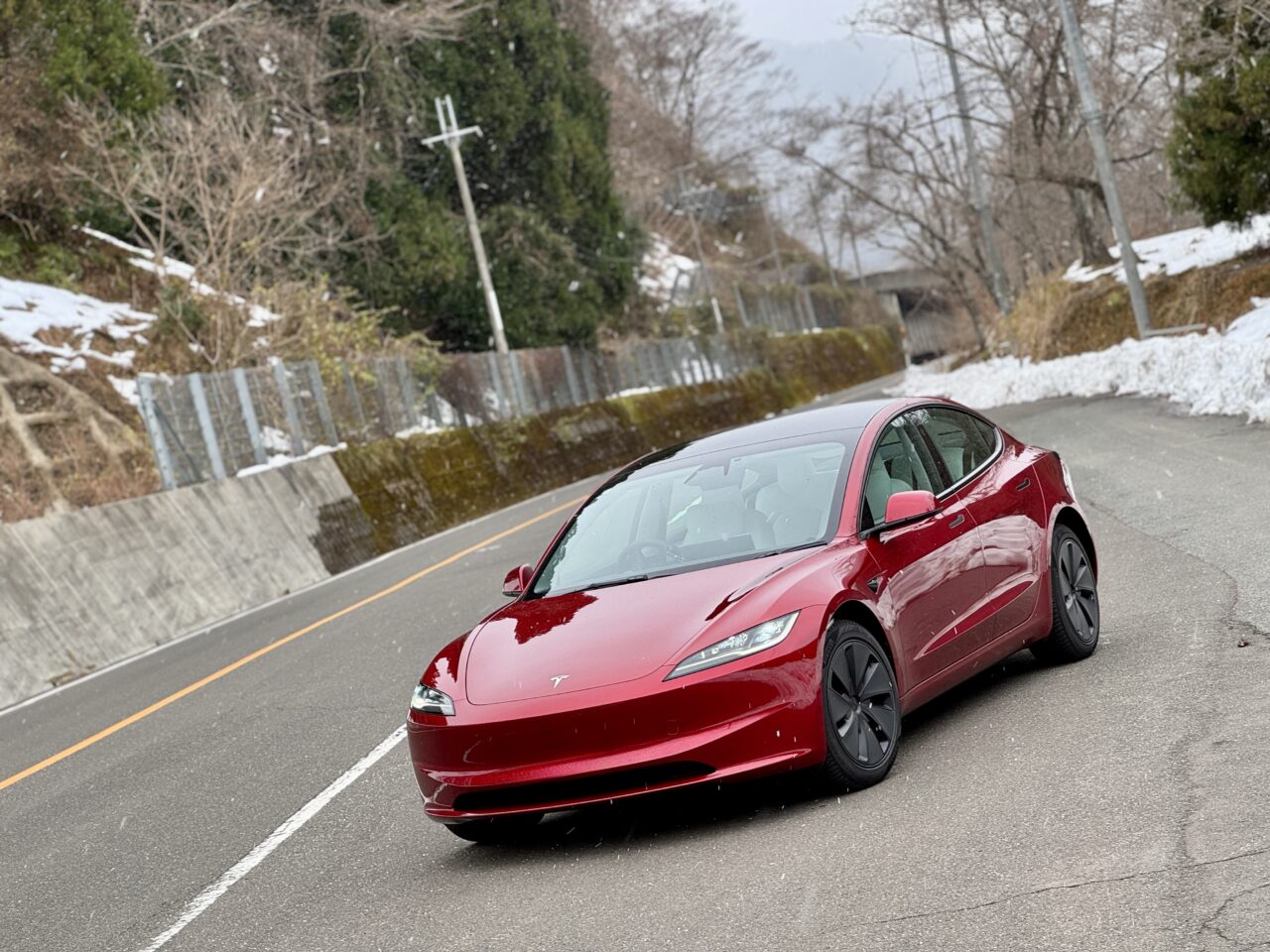
For those who enjoy driving and car performance, all-season tires should be considered as an option.
However, just in case.Those who value grip in extreme conditions on icy roads should choose studless tires.It is. For me personally,All-season tires are selected because they provide more grip and driving feel in situations above 95% than in rare cases.
All-season tires are an attractive option for drivers who want to maximize their vehicle's performance and achieve both safety and driving pleasure.
However, we hope that you will select the most appropriate tires after carefully assessing your own driving environment and priorities.
Follow me if you like this blog!


Comment ( 4 )
Trackbacks are closed.
ブログいつも楽しく読ませていただいています。ありがとうございます。
ピレリのオールシーズンタイヤの記事でしたので質問させて下さい。
私はSUVに乗っているため年間を通してミシュランのクロスクライメイトを通算2セット、合算の距離で80,000kmほど利用しています。このタイヤではアイスバーンは苦手ですが、AWDのため走り出せれば注意しながら利用できています。
一点質問です、雪が積もっているとクロスクライメイトは後退ができないに等しいレベルですがピレリは後退時タイヤの具合はいかがでしょうか。
タイヤのV字なブロックパターンを見ると後退したい時は逆V字になるため効かないということなのかな?と思っています。
わかる範囲でご教示いただけると幸いです。
Best regards.
w253さん、こんにちは。
オールシーズンのバック問題は以前、確か五味さんのYouTubeか何かで見たことあります。
なので、実は今回、何度かテストしてみました。
坂道でやる機会はなかったのですが、普通にバックする分には全然問題なかったです。
ただし、今回は電気モーターなので、異様に緻密な制御でタイヤのトラクションを確保しようとするのもあったとは思います。
Hello!
北海道の比較的豪雪な地域で冬も964カレラ2、FRのM3に乗っています。
オールシーズンタイヤは使ったことありませんが、なかなか良さそうですね!
タイヤ交換は必要になりますが、スタッドレスならノキアンがオススメです。
スタッドレス本来の性能はもちろん、剛性が高くドライでも楽しく乗れます。
機会があったら試してみてください!
Hello, KA.
なんと、北海道で964カレラ2とM3!!
素晴らしいラインナップ、そして、この2台の雪道は楽しそうですね!
ノキアンタイヤは知りませんでした!ドライでもしっかり走れるスタッドレスなら大歓迎です!
一度、調べておきます!情報ありがとうございました。